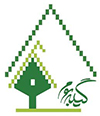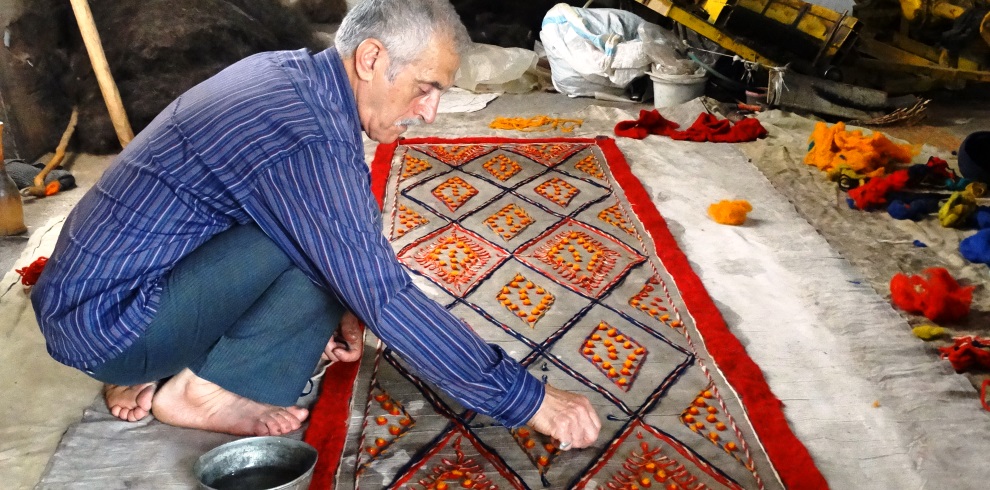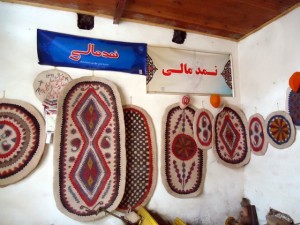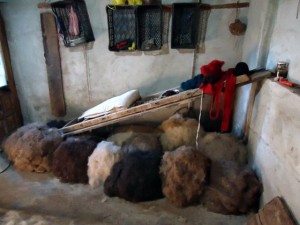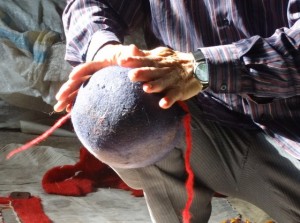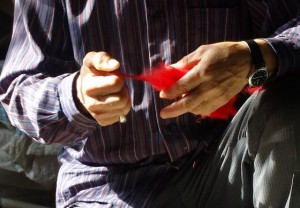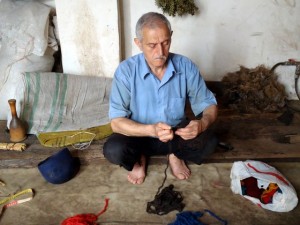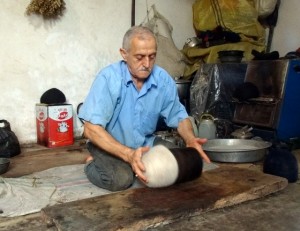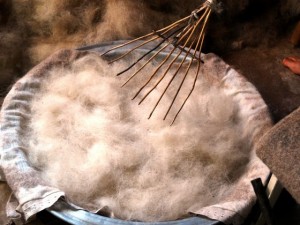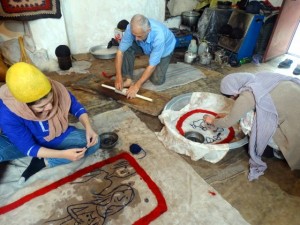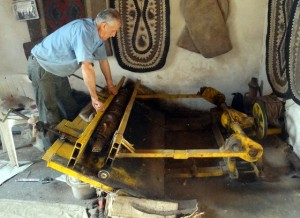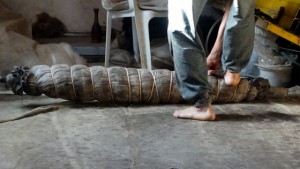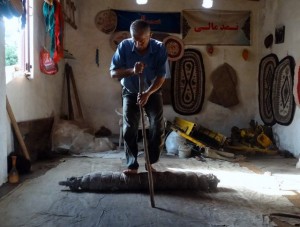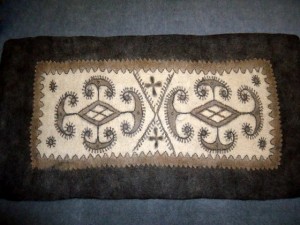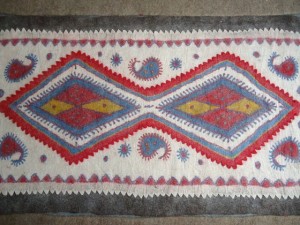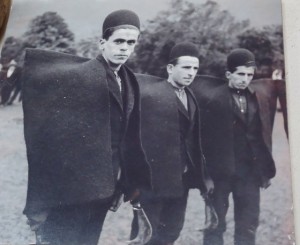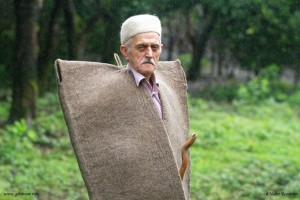Feltmaking Goal: In this workshop, the participants learn about the history of felting, wool batting, felt making techniques and the common designs, motifs and patterns used in eastern Gilan. They can also participate in making felt patterns of their choice with the help of a master feltmaker.
The Program:
The master feltmaker explains about the types of wools and their properties, dyeing methods, wool batting and felt making techniques while simultaneously demonstrating on a small piece of felt. The tour guide asks the participants some questions on feltmaking to highlight the important points. The participants are then divided into teams and each team can make different patterns with felted wool strings.
Required Tools and Raw Materials:
The felting tools include molds for making hats, mats and Kulagir (Gilak name for shepherds’ jacket), Panjere (a tool used for whisking the wool), Cheste-baste (a tool used for pouring the boiled water uniformly), wooden models, various felt strings and threads, felt pressing and felt treating machines.
Motifs, Designs and Their Philosophy:
The traditional felting patterns used in the eastern Gilan region such as the Ghasem-Abadi Toranj, the Caspian Vimba fish motif, paisley and other motifs are described and their significance is explained.
Felt Products:
Hats, shepherds’ jackets, waistcoats and mats.
